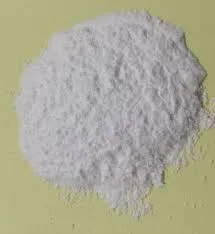- Afrikaans
- Albanian
- Amharic
- Arabic
- Armenian
- Azerbaijani
- Basque
- Belarusian
- Bengali
- Bosnian
- Bulgarian
- Catalan
- Cebuano
- Corsican
- Croatian
- Czech
- Danish
- Dutch
- English
- Esperanto
- Estonian
- Finnish
- French
- Frisian
- Galician
- Georgian
- German
- Greek
- Gujarati
- Haitian Creole
- hausa
- hawaiian
- Hebrew
- Hindi
- Miao
- Hungarian
- Icelandic
- igbo
- Indonesian
- irish
- Italian
- Japanese
- Javanese
- Kannada
- kazakh
- Khmer
- Rwandese
- Korean
- Kurdish
- Kyrgyz
- Lao
- Latin
- Latvian
- Lithuanian
- Luxembourgish
- Macedonian
- Malgashi
- Malay
- Malayalam
- Maltese
- Maori
- Marathi
- Mongolian
- Myanmar
- Nepali
- Norwegian
- Norwegian
- Occitan
- Pashto
- Persian
- Polish
- Portuguese
- Punjabi
- Romanian
- Russian
- Samoan
- Scottish Gaelic
- Serbian
- Sesotho
- Shona
- Sindhi
- Sinhala
- Slovak
- Slovenian
- Somali
- Spanish
- Sundanese
- Swahili
- Swedish
- Tagalog
- Tajik
- Tamil
- Tatar
- Telugu
- Thai
- Turkish
- Turkmen
- Ukrainian
- Urdu
- Uighur
- Uzbek
- Vietnamese
- Welsh
- Bantu
- Yiddish
- Yoruba
- Zulu
Dec . 12, 2024 10:59 Back to list
glutaral and deciquam solution
The Role of Glutaraldehyde and Deciquam Solutions in Modern Disinfection
In the field of disinfection and sterilization, the importance of effective chemical agents cannot be overstated. Among these agents, glutaraldehyde and deciquam solution have gained attention for their potent antimicrobial properties and versatile applications. Understanding these solutions, their mechanisms, and their practical uses is essential for effective infection control in various settings.
Glutaraldehyde Broad-Spectrum Antimicrobial Agent
Glutaraldehyde is a dialdehyde compound that serves as a powerful disinfectant and sterilant. It is commonly used in healthcare settings for the high-level disinfection of medical instruments and surfaces. The mechanism through which glutaraldehyde exerts its antimicrobial effects involves the cross-linking of microorganism proteins and nucleic acids, leading to cell death. Glutaraldehyde is effective against a wide range of pathogens, including bacteria, viruses, and fungi, making it suitable for environments that require stringent infection control measures.
Typically, glutaraldehyde is utilized in a solution concentration of 2% to 3%. At this concentration, it can achieve disinfection in about 20 to 30 minutes, although its effectiveness and required exposure times can vary based on the type of microorganism and the material being disinfected. One of the significant advantages of glutaraldehyde is its residual activity, which can provide ongoing antimicrobial protection on surfaces if properly applied.
Safety Considerations
Despite its efficacy, glutaraldehyde poses certain safety considerations. It is classified as a sensitizer and irritant; prolonged exposure can lead to allergic reactions or respiratory issues. Therefore, users must adhere to safety guidelines, including using appropriate personal protective equipment (PPE) and ensuring adequate ventilation when applying glutaraldehyde solutions. Training and proper handling protocols are essential to minimize health risks for workers in environments where glutaraldehyde is used.
Deciquam Solution A Versatile Antiseptic
glutaral and deciquam solution

Deciquam, or dodecylbenzyldimethylammonium chloride (DBDMAC), is a quaternary ammonium compound that serves as a highly effective antiseptic and disinfectant. Like glutaraldehyde, deciquam is effective against a variety of pathogens, including bacteria and viruses, making it suitable for comprehensive infection control. Its mechanism of action involves disrupting microbial cell membranes, leading to cell lysis and death.
Deciquam solutions are often employed in both healthcare and industrial settings due to their versatility. They can be used for hand sanitization, surface disinfection, and in personal care products. One of the significant advantages of deciquam is its lower toxicity compared to traditional disinfecting agents, reducing the risk of adverse health effects when used as directed.
Practical Applications and Combination Usage
Both glutaraldehyde and deciquam solutions have distinct applications and can even be used in combination to enhance disinfection efforts. In medical settings, for example, glutaraldehyde can be used for the sterilization of heat-sensitive instruments, whereas deciquam can be applied as a surface disinfectant or in hand hygiene protocols.
In recent years, there has been an increasing trend toward employing environmentally friendly disinfectants. The relative safety profile of deciquam makes it an attractive option for those seeking less toxic alternatives in their disinfection processes. However, understanding the specific contexts in which each disinfectant is most effective is vital for optimizing their use.
Conclusion
In summary, glutaraldehyde and deciquam solutions are essential tools in the arsenal of infection control. While glutaraldehyde remains a go-to for high-level disinfection in medical environments, deciquam offers a versatile and safer alternative for routine antisepsis. With a proper understanding of their properties, mechanisms, and safety measures, these chemical agents can significantly contribute to maintaining hygiene and preventing the spread of infections in various applications. As the landscape of disinfection continues to evolve, ongoing research and education regarding these solutions will remain crucial for enhancing public health outcomes.
-
Guide to Oxytetracycline Injection
NewsMar.27,2025
-
Guide to Colistin Sulphate
NewsMar.27,2025
-
Gentamicin Sulfate: Uses, Price, And Key Information
NewsMar.27,2025
-
Enrofloxacin Injection: Uses, Price, And Supplier Information
NewsMar.27,2025
-
Dexamethasone Sodium Phosphate Injection: Uses, Price, And Key Information
NewsMar.27,2025
-
Albendazole Tablet: Uses, Dosage, Cost, And Key Information
NewsMar.27,2025













